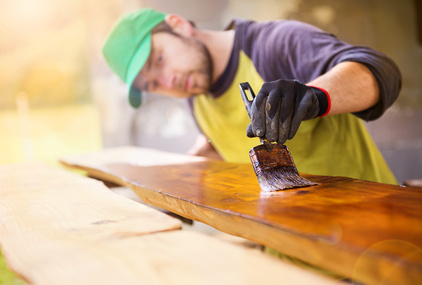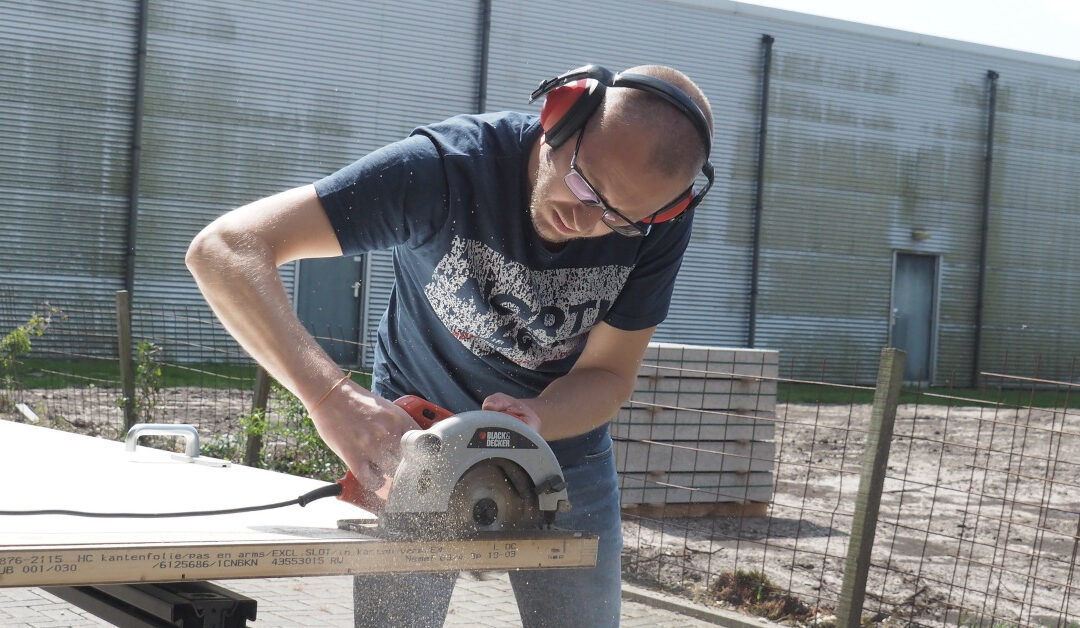A few tools, some safety equipment, and a little know-how put almost any project within reach of the average DIYer.
Picture by E2OMedia.
Do It Yourself: Learning New Skills
DIY Beginners may find some new projects overwhelming. When faced with a leaky drain pipe or a door that won’t stay closed, their first reaction is to call someone to fix it. For some projects, that is definitely the best choice. Don’t try to learn how to fix a burst pipe when water is flooding your basement. Take a deep breath, shut off the main water valve, and then decide if you’re going to tackle the project yourself or call a plumber.
Time
“I’ll just call someone. I don’t have the time.” Make the call. Then wait for the service to show up. Wait while they fix whatever it is. Pay them. If it wasn’t too complicated, you could have done it yourself, would not have waited, and saved some money.

Learn How to Do It Yourself
Photo by Half Point Photography
Do It Yourself to Save Time and Money
Everything you do does take time and even more time when you’re not sure how to accomplish the task at hand. With step-by-step instructions, almost anyone can make plumbing repairs, change an electrical outlet or switch, or fix that piece of trim that’s been annoying you since the beginning of time.
Hiring someone else to do the job also takes time. You have to find someone who knows how to do the job. How do you pick this electrician over that one. Does this plumber cheat people, or his honest. The next thing you knew, you’re reading online reviews, comparing horror stories. Even after all that, you can’t be sure the tradesman was the one you needed until after he is long gone and the bill has been paid.
More than likely, you had to take time off of your job to let him in the house and stay there while he worked.
Just like anything else, if you don’t take the time to learn something new, you’ll never be able to do it and the same scenario will repeat over and over.
Okay. The first time, you might not save much time. But the second and third time, that’s when learning the new skill pays off in both time and money.
Money
Even when a repair could take just two minutes and doesn’t use any materials, there is a minimum charge and it isn’t just pennies, but dollars. Often many dollars. The charge just to show up at your door often costs more than the actual repair.
Sometimes, you have to make an investment in the future. Most people have retirement plans which are an investment in the future. Money set aside so that in our senior years, we can leave the day-to-day job behind and focus on things we enjoy.
DIY is like that. It’s an investment for the future that provides a sense of security. When a pipe starts leaking, you won’t spend all that time worrying over which plumber to hire. Chances are, in ten or fifteen minutes, you can fix that pipe and have time for something else instead of rearranging your schedule to accommodate someone else.
Best of all, the money you saved can go toward something else. Like a dinner out with your other half. And speaking of which, what is more impressive? Finding a plumber who can come out in an emergency and waiting for them to arrive while the water depth in your basement grows by inches an hour, or fixing the problem before they have time to make that first call?
The investment in dollars comes in the form of a tool box filled with the right tools and some basic supplies. Sure, you might have to make a trip to the hardware store or home center, but you’re already ahead of the game.
Be Sensible
There’s more to DIY than just diving in the first time a problem arises and you have an emergency on your hands. The process begins with a few simple questions:
- How do I stop further damage before it gets worse?
- Have I fixed anything like this before?
- Do I have the tools I need to do this?
- Are the supplies needed on hand?
- What are my chances of success?
Ultimately, your decision rests on the last question. The rest are part of the thought process of actually beginning the repair.
When something happens, like a burst pipe that is pouring out water, do the sensible thing and stop the water. Turn off the valve that controls the water first. If it is sink or toilet connection, you can turn that valve off where it comes out of the wall or floor. If not, turn off the main water valve. Then approach the problem thoughtfully. Determine what tools and supplies are needed, and what skills you need to fix the problem.
Bottom Line
There is a first time for everything. It doesn’t matter if you’re an accountant, the CEO of a fortune 100 company, or the baker who gets up at three in the morning to make the coffee and donuts for the morning commuters. Everything you have done had a first time.
DIY home repairs are a lot like that. The first time you open a package of parts to rebuild the lawnmower carburetor, you might think it’s too much. But if you work carefully and take your time, the job only takes an hour and suddenly, your lawnmower is running smoothly and starts on the first pull.
If you never try anything new, you’ll never learn any new skills. That is true in just about any aspect of life from cooking to cleaning to fixing things around your home.
